The typical Great Blue Hole diving trip is most often followed up by a lesser advertised, yet more spectacular dive site known as the Half Moon Caye Wall or ‘The Wall’.
Related: Top dive sites in Belize & Top-rated Belize Attractions
Along with the Blue Hole, The Wall is located at the Lighthouse Reef Atoll. So after the 60 minutes at the Blue Hole dive site, most dive tours visit The Wall as part of a surface interval. The boat takes about 25 minutes to get there.
The Wall is perhaps Belize’s best dive site
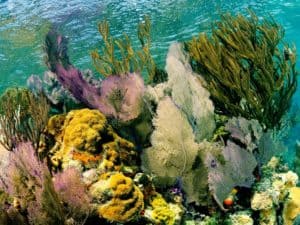
The sheer consistency of diverse wildlife encounters, beautiful corals and gentle dive conditions makes Half Moon Caye Wall one of the best dive sites in Belize and the Caribbean. I haven’t been to all dive sites in the Caribbean but I’ve been told by many divers that The Wall is pretty much as good as it gets. On the surface, it’s the sort of scene you’d only expect to find in a photoshopped magazine ad. The pristine
Below the surface, there is a gentle sandy slope that starts on the beach of the island in the distance and gradually leads up to a drop-off at around 45 Ft/ 13 M. The drop-off is bordered by a crust of reef that forms an awe-inspiring wall scattered with hidden tunnels; yellow and neon blue sponges, black and lilac sea fans and giant barrel sponges with abstract-shaped openings. It goes down to depths of 100 Ft/30 M or more. You start off by dropping over about 30Ft/10M of water and descending onto bright white sand with patches of
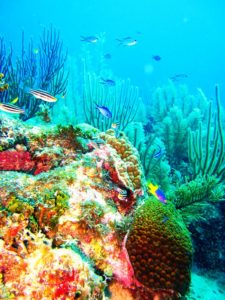
You then follow your dive leader toward the wall; were mounds of coral are covered by swarms of juvenile fish in shades of purple, yellow, blue, red and green. Schools of Creole wrasse zoom over bumps and dodge fans while staying in wave-like formation, you may notice that they carry themselves about much like a group of commuters in a bustling city. Groupers hover over brain corals or in giant sponges; a sort of expression on their would-be faces that lies between gloomy and grumpy. If you are observant and move slowly, you will occasionally see one or 2 with their gills or mouths being cleaned by tiny fish and shrimp. (Cleaning Stations)
At this point, the dive leader should have already asked you to level off at a predetermined maximum depth, usually 60Ft/18M. Though, take note, the high visibility makes it difficult to determine depth. Sunlight, on most days, easily reaches down to 100 Ft/30 M so divers must be vigilant and frequently check their depth.
Depending on where your dive boat dropped off your team, it may take 10 or 20 minutes to find a safe swim through. On a good day, schools of tiny silverfish shelter in the naturally occurring coral tunnels, as you swim through the tunnel, it becomes much like swimming through a glittering bead curtain. They move seamlessly out of your way as you swim past, you never touch any of the hundreds of fish.
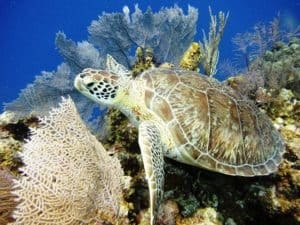
At the other end of the tunnel, dive leaders direct you back toward the wall. The face of the wall is reminiscent of a mountain face. If you’re lucky, you will see eagle rays gliding over subtle currents, hovering over coral peaks like their air counterparts; graceful, spots gleaming, almost golden from certain angles. Reef Sharks may also wander in and out of crevices, most avoid coming close and stick to patrolling the outer edges of the wall. Now and then, Hawksbill turtles drop in to munch on sponges, so it’s good to keep an eye out for them, they may also be seen going back up for air after time at depth.
Nearing the end of your dive you might have a dive time of about 45 to 50 minutes, it is unwise to spend too much time at your maximum depth and best to dive conservatively, especially if your previous dive was the Blue Hole and you’re not using nitrox. This includes respecting no decompression limits, even if they restrict dive time. Whether or not you come up due to low air, NDL, or dive time, it is best to do a safety stop, and because of the excellent visibility, it is common to be kept entertained by rays or sharks passing below. On rare occasions, dolphins might also be seen.
The Wall, as far as Belizean dive sites go, is in its own class. It is potentially unforgettable, even if you’re difficult to satisfy. I honestly feel that no matter who you are, or where you’ve dived, you will enjoy diving the Half Moon Caye Wall. It is nothing short of amazing.
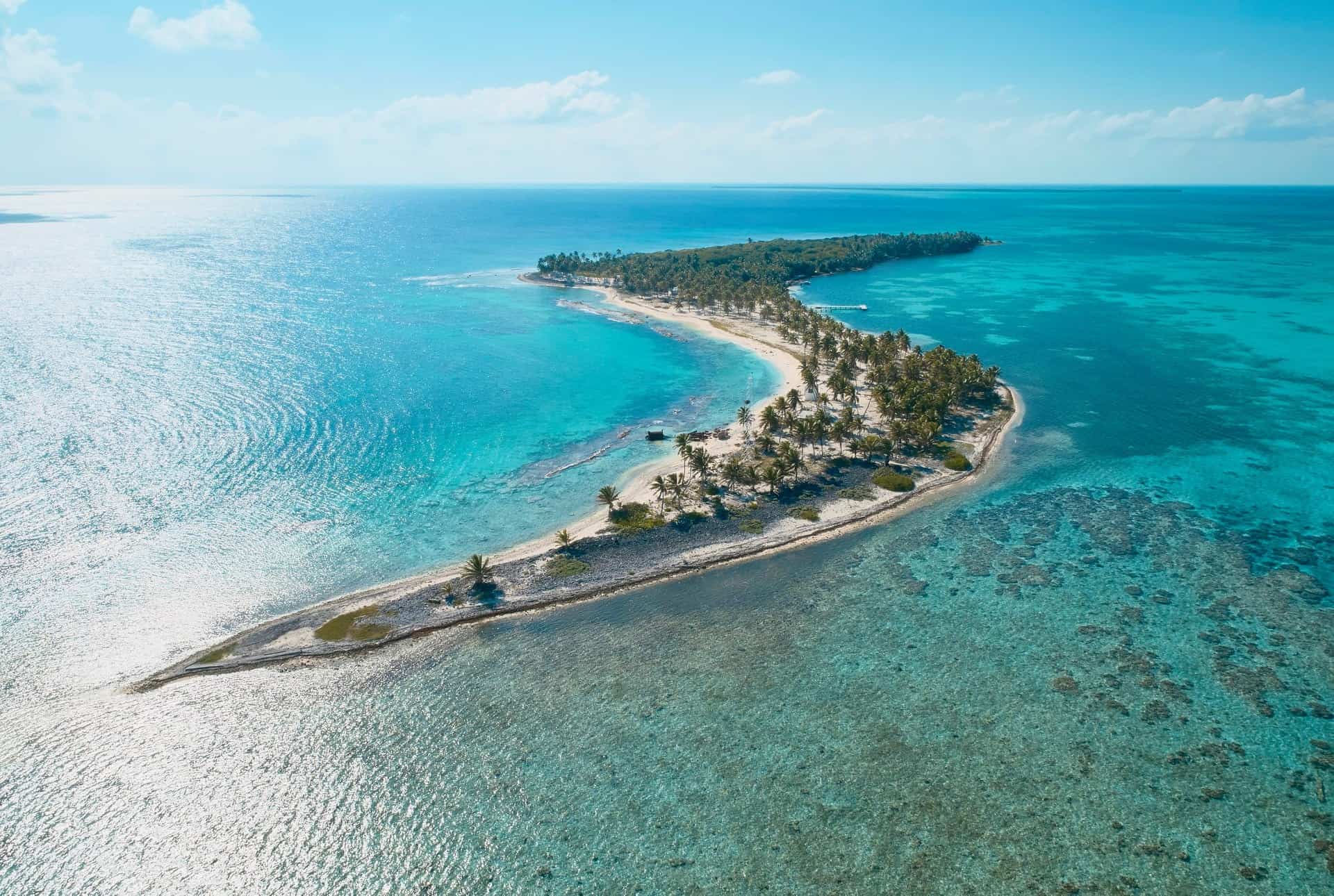
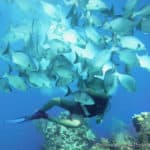
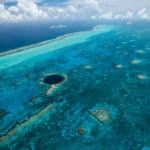
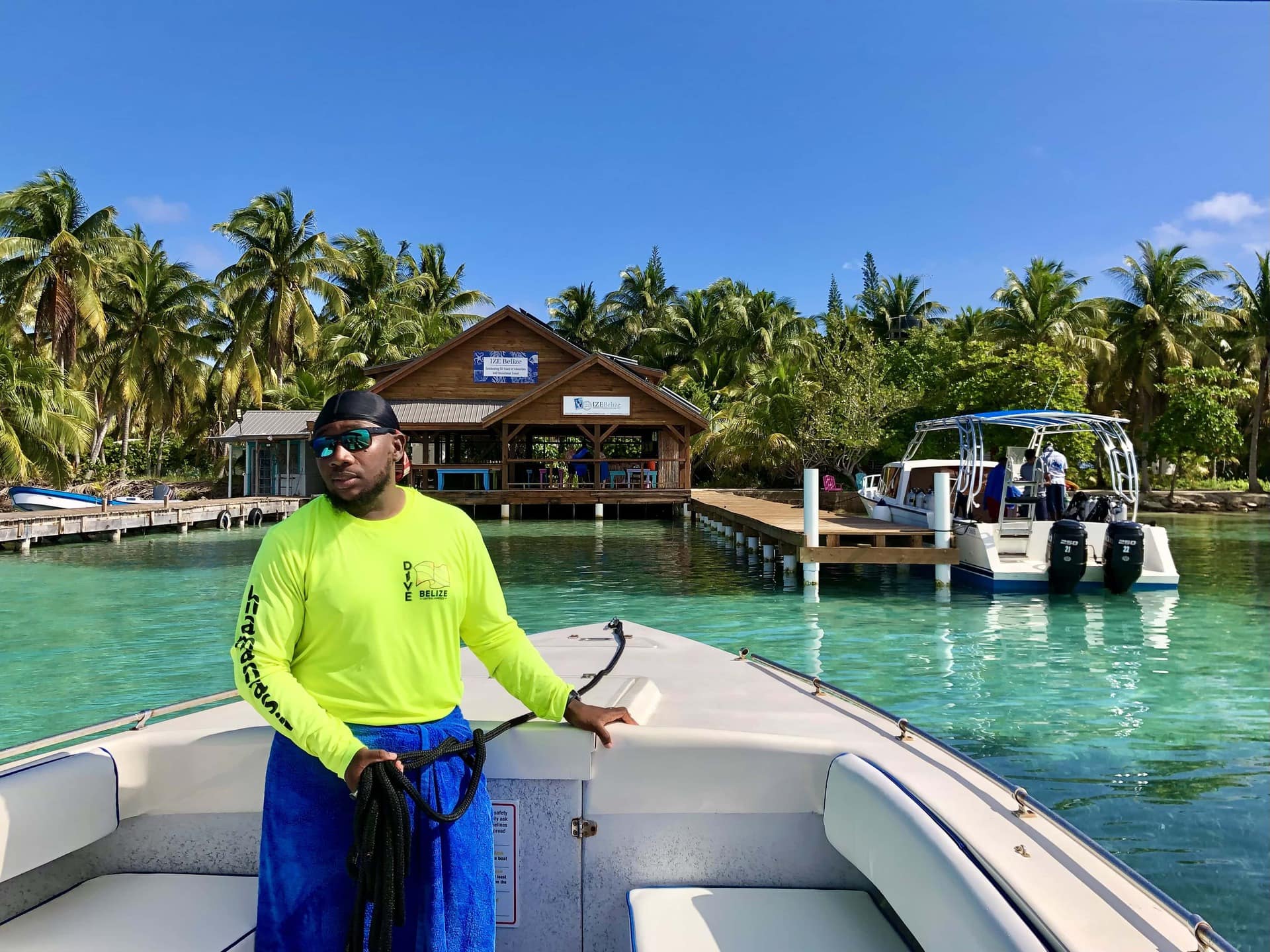
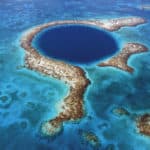
T hats beatifull place
Wow, it’s heaven under the ocean!
Sounds like a wonderful dive.
It is indeed. Thanks for commenting.
Its really appreciating that how beautifully you explains the beauty of Belize that anyone can fell in love with this wonderful heaven city 🙂